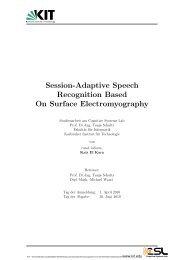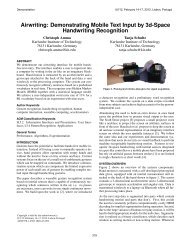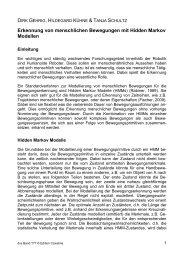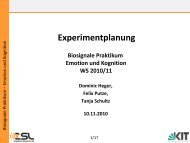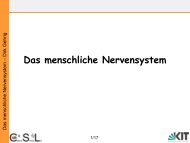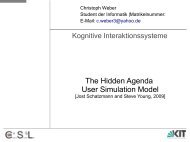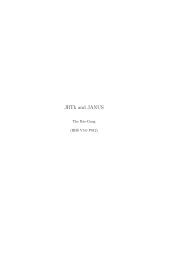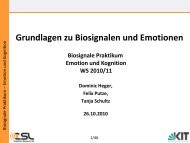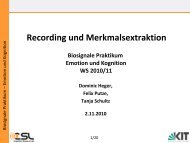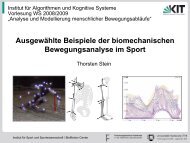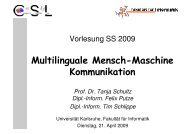Dynamic Time Warping (DTW) for Single Word and Sentence ...
Dynamic Time Warping (DTW) for Single Word and Sentence ...
Dynamic Time Warping (DTW) for Single Word and Sentence ...
You also want an ePaper? Increase the reach of your titles
YUMPU automatically turns print PDFs into web optimized ePapers that Google loves.
<strong>DTW</strong> <strong>for</strong> <strong>Single</strong> <strong>Word</strong> <strong>and</strong> <strong>Sentence</strong> Recognizers<br />
Utterance Comparison by <strong>Dynamic</strong> <strong>Time</strong> <strong>Warping</strong><br />
How can we apply the DP algorithm <strong>for</strong> the minimal editing distance to the<br />
utterance comparison problem?<br />
Differences <strong>and</strong> Questions:<br />
• What do editing steps correspond to?<br />
• We "never" really get two identical vectors.<br />
• We are dealing with continuous <strong>and</strong> not discrete signals here<br />
Answers:<br />
• We can delete/insert/substitute vectors. Define cost <strong>for</strong> del/ins, define<br />
cost <strong>for</strong> substituting = distance between vectors<br />
• No two vectors are the same? So what.<br />
• Continuous signals => we get continuous distances (no big deal)<br />
The <strong>DTW</strong>-Algorithm:<br />
• Works like the minimal editing distance algorithm<br />
• Minor modification: Allow different kinds of steps (different<br />
predecessors of a state)<br />
• Use vector-vector distance measure as cost function<br />
32



